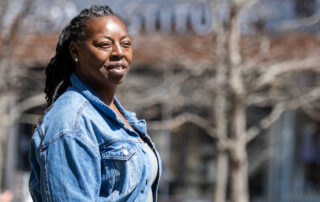Somewhere in northeastern Wisconsin, there is a rare species of plant, bright green with red tentacles… eating insects. This tiny plant is snugly clumped up with thousands of other tiny plants, all composing a giant bog mat. This football-sized field of floating moss bounces up and down with the motion of the water beneath it. That water is a lake, Grandma Lake.
Describing something from a Dr. Seuss book? Not quite. These are the field observations of Thomas Meyer, a conservation biologist with the Wisconsin DNR.
For more than 30 years, Meyer has worked to protect these magical, seemingly fictional habitats that can be found throughout Wisconsin. They are known as State Natural Areas and often host the rarest species of flora and fauna in the state.
“State Natural Areas try to do one thing and one thing alone: protect Wisconsin’s biological diversity in the form of what we call natural communities, or native landscapes.” These can include old-growth forests hosting 200-year-old trees, pristine wetlands inhabited with wild rice beds, a desert of sand dunes populated with cacti and Wisconsin-native lizards and floating bog mats dotted with carnivorous plants.
“I like to think of protecting nature as the idea that every thing has an intrinsic right to exist. So, for folks who aren’t able to come visit a place like this, I think just the knowledge that it exists is important to our human legacy.”
Meyer started at the DNR as a student intern in 1984 and will soon retire after a near-40-year career dedicating his life to preserve natural habitats of Wisconsin. “We find wonderful places that are of natural-area quality, and we work with landowners to talk about protecting their property.”
Meyer recently advised a production team at PBS Wisconsin, helping give guidance on sites to feature for the documentary series ‘Wisconsin Scenic Treasures.’ Since spring of 2020, film crews have set out across the state, county by county, documenting the most special habitats and places to be featured in the films.
“Working with creative people to showcase these wonderful places has been really one of the highlights of my career,” he says. “To be able to go out with the videographers and field producers and sound people to explore these wonderful places, and to capture them so that they can be shared with people around the state has just really been a lot of fun.”
When asked to reflect on his decades-long career as a Wisconsin conservation biologist, he says “I guess if I had to come up with a few words, it would be rewarding, thankful and grateful. Every day I go to work knowing that I’m helping protect Wisconsin’s nature, writ large, in the form of State Natural Areas. The rare species, rare plants, and animals we work to protect is truly a rewarding experience.”










